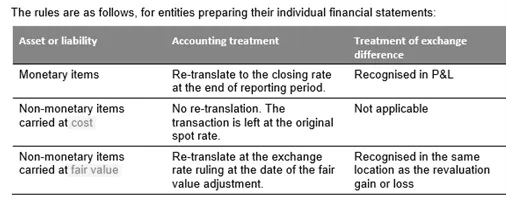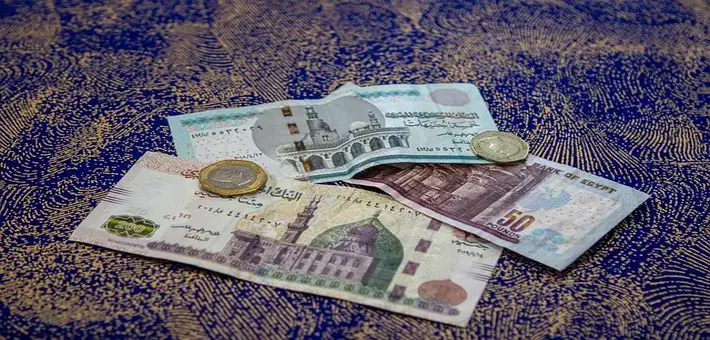Overview
Companies often enter into transactions in a foreign currency. Groups often contain overseas entities. A parent company might own a foreign subsidiary or associate. This foreign entity will normally maintain its accounting records and prepare its financial statements in a currency that is different from the currency of the parent company. These IAS 21 notes are prepared by mindmaplab team and covering IAS 21 foreign currency summary, the effects of changes in foreign exchange rates, monetary items and functional currency determination with examples. This is IAS 21 full text we have also prepared the IAS 21 pdf version download.
IAS Standards
IAS 2 Inventories
IAS 7 Statements of cash flows
IAS 7 Statement of cash flows – Revisited
IAS 8 Accounting policies, changes in accounting estimates, and errors
IAS 10 Events after the reporting period
IAS 16 Property, plant and equipment
IAS 20 Accounting for government grants and disclosure of government assistance
IAS 21 The effects of changes in foreign exchange rates
IAS 24 Related party disclosures
IAS 27 Consolidated and separate financial statements
IAS 28 Investments in associates and joint ventures
IAS 32 Financial instruments: presentation
IAS 33 Earnings per share – Revisited
IAS 37 Provisions, contingent liabilities and contingent assets
IFRS Standards
IFRS 5 Non-current assets held for sale and discontinued operations
IFRS 7 Financial instruments: disclosures
IFRS 10 Consolidated financial statements
IFRS 12 Disclosure of interests in other entities
IFRS 13 Fair value measurement
IFRS 15 Revenues from contracts with customers
IAS 17 VS IFRS 16 Lease – Differences
Companies often enter into transactions in a foreign currency. Groups often contain overseas entities. A parent company might own a foreign subsidiary or associate. This foreign entity will normally maintain its accounting records and prepare its financial statements in a currency that is different from the currency of the parent company.
These transactions need to be translated into the company’s/parent company’s own currency in order to record them in its ledger accounts/group’s consolidated accounts.
Scope of IAS Foreign currency
IAS 21 shall be applied:
- in accounting for transactions and balances in foreign currencies, except for those derivative transactions and balances that are within the scope of IFRS 9 Financial Instruments;
- in translating the results and financial position of foreign operations that are included in the financial statements of the entity by consolidation or the equity method; and
- in translating an entity’s results and financial position into a presentation currency.
IAS 21 Definitions
- Presentation currency – The currency in which the financial statements of an entity are presented
- Functional currency – The currency of the primary economic environment in which an entity operates.
- IAS 21 describes the functional currency as – The currency that mainly influences:
- sales prices for goods and services.
- labour, material and other costs of providing goods or services.
- The currency in which funds from financing activities are generated by issuing debt and equity.
- The currency in which receipts from operating activities are usually retained.
- The functional currency is not necessarily the currency of the country in which the entity operates or is based
- When a reporting entity records transaction in its financial records, it MUST identify its functional currency and make entries in that currency.
- IAS 21 describes the functional currency as – The currency that mainly influences:
- Foreign currency – A currency other than the functional currency of the entity.
- Exchange rate – The rate of exchange between two currencies
- Spot rate – The exchange rate at the date of the transaction
- Closing rate – The spot exchange rate at the end of the reporting period
The two main accounting issues
The process of translation would be quite simple if exchange rates between currencies remained fixed. However, exchange rates are continually changing. The translated valuation of foreign currency assets or liabilities in the statement of financial position might therefore change if they are translated at different times.
The two main accounting issues when accounting for foreign currency items are:
- What exchange rate(s) should be used for translation?
- How to account for the gains or losses that arise when exchange rates change?
IAS 21 The individual entity – Accounting rules
An individual company may have transactions that are denominated in a foreign currency. These transactions may have to be translated on several occasions. When a transaction or asset or liability is translated on more than one occasion, it is:
- translated at the time that it is originally recognised; and
- re-translated at each subsequent occasion.
Re-translation may be required, after the transaction has been recognised initially:
- at the end of a financial year (end of a reporting period);
- when the transaction is settled (which may be either before, or after the end of the financial year).
On each subsequent re-translation, an exchange difference will occur. This gives rise to a gain or loss on translation from the exchange difference.
- The gain or loss is the difference between the original and re-translated value of the item.
- There is an exchange gain when an asset increases in value on re-translation, or when a liability falls in value.
Initial recognition: translation of transactions
On initial recognition, a transaction in a foreign currency must be translated at the spot rate on the date of the transaction.
If the entity buys items in frequently, it may be able to use an average spot rate for a period, for all transactions during that period.
IAS 21 therefore allows entities to use an average rate for a time period, provided that the exchange rate does not fluctuate significantly over the period.
Reporting at the end of each reporting period and gain or loss arising on translation
The rules in IAS 21 for reporting assets and liabilities at the end of a subsequent reporting period make a distinction between:
- Monetary items, such as trade payables and trade receivables, and
- Non-monetary items, such as non-current assets and inventory.

Revaluations of non-current assets
A non-current asset in a foreign currency might be re-valued during a financial period.
Any gain or loss arising on retranslation of this property is recognised in the same place as the gain or loss arising on the revaluation that led to the retranslation.
- If a revaluation gain had been recognised in other comprehensive income in accordance with IAS 16, the exchange difference would also be recognised in other comprehensive income.
- If a revaluation gain had been recognised in profit or loss in accordance with IAS 40, the exchange difference would also be recognised in profit or loss.
Reporting at the settlement of a transaction
The settlement of a foreign currency transaction involves a receipt or payment in foreign currency.
There will be exchange difference when the exchange rate at the date of settlement is different to that at the date of initial recognition of the receivable or payable in question. This is recognised in the statement of profit or loss.
IAS 21 The Foreign operation – Accounting rules
If a company has a foreign operation (such as a foreign subsidiary) that prepares its accounts in a functional currency that is different from the group’s presentation currency, there are three stages in the accounting process, for the purpose of preparing consolidated financial statements:
- Adjust and update
- Ensure that the individual financial statements of the foreign entity are correct and up-to-date.
- Translate
- The assets and liabilities of the foreign entity should be translated into the presentation currency of the parent company.
- Consolidate
- After translation, all the financial statements are now in the same currency.
- Normal group accounting principles are now used to prepare the consolidated accounts of the group.
Adjust and update stage
This deals with any adjustments to the accounts of the subsidiary and parent, e.g. intercompany trading transactions and inter-company loans. Apply the normal rules for dealing with these.
The translation stage
This apply where the functional currency of the foreign entity is not a currency suffering from hyperinflation. When there is hyperinflation, IAS 29 provides special accounting rules.
The normal rules for translation, contained in IAS 21, are:
The statement of financial position
- The assets and liabilities of the foreign operation are translated at the closing rate for inclusion in the consolidated statement of financial position.
- This rule also applies to purchased goodwill arising on the acquisition of a foreign subsidiary.
The statement of profit or loss
- Income and expenses are translated at the rates ruling at the date of the transaction (spot rates) for inclusion in the consolidated statement of profit or loss.
- Average rates are widely used in practice.
Exchange differences
All resulting exchange differences are recognised in other comprehensive income for the period and are credited (gain) or debited (loss) to a separate reserve within the equity section of the consolidated statement of financial position, and this reserve is maintained within equity until the foreign operation is eventually disposed of:
- The total Exchange gain/loss amount is recognised in other comprehensive income.
- The amount attributable to the parent is recognised in a currency translation reserve.
- The amount attributable to the non-controlling interest is recognised in the non-controlling interest balance.
The consolidation stage
After the translation stage, the financial statements of the overseas entity are in the presentation currency of the parent company. Consolidation can proceed as normal. However, there are several issues to be aware of:
- Goodwill must be retranslated at each reporting date; and
- A foreign exchange reserve must be included in the consolidated statement of financial position for the cumulative exchange differences.
IAS 21 requires that:
Goodwill arising on the purchase of the foreign subsidiary (and also any fair value adjustments to the value of assets of the subsidiary) should be stated in the functional currency of the foreign subsidiary.
The goodwill and fair value adjustments will therefore be translated each year at the closing exchange rate.
*The Exchange gain/loss amount on goodwill is fully attributable to the parent as it only relates to the parent’s investment in the subsidiary.
* Remember that share capital and reserves of subsidiary include Exchange differences.
Disposal of a foreign subsidiary
Most of the accounting rules for the disposal of a foreign subsidiary, or for the partial disposal of a foreign subsidiary, are set out in IFRS 10.
IFRS 10 does not deal with the accounting treatment of the balance on the separate equity reserve account when a foreign subsidiary is disposed of. This matter is dealt with by IAS 21.
*Keep it simple – The gain/loss on disposal of foreign subsidiary (Consideration received from sale of shares – Carrying value of net assets of subsidiary) along with Exchange gain/loss are recognized in profit or loss.
IFRIC 22: Foreign Currency Transactions and Advance Consideration
IFRIC 22 applies to a foreign currency transaction (or part of it) when an entity recognises a nonmonetary asset or non-monetary liability arising from the payment or receipt of advance consideration before the entity recognises the related asset, expense or income (or part of it).
IFRIC 22 addresses how to determine the date of the transaction for the purpose of determining the exchange rate to use on initial recognition of the related asset, expense or income (or part of it) on the derecognition of a non-monetary asset or non-monetary liability arising from the payment or receipt of advance consideration in a foreign currency. In this respect the date of the transaction for the purpose of determining the exchange rate to use on initial recognition of the related asset, expense or income (or part of it) is the date on which an entity initially recognises the non-monetary asset or non-monetary liability arising from the payment or receipt of advance consideration. If there are multiple payments or receipts in advance, the entity shall determine a date of the transaction for each payment or receipt of advance consideration.
